 Part of the Oxford Instruments Group
Part of the Oxford Instruments Group
Expand
Collapse
Atomic Layer Deposition (or ALD) is an advanced deposition technique that allows for ultra-thin films of a few nanometres to be deposited in a precisely controlled way. Not only does ALD provide excellent thickness control and uniformity but 3D structures can be covered with a conformal coating for high-aspect-ratio structures.
ALD relies on self-limiting surface reactions and therefore generally provides very low pin-hole and particle levels, which can benefit a wide range of applications. The level of film and interface control and high film quality provided are sought after for many applications. The usage of plasma allows for improved film properties, control thereof and a wide range of possible materials. The flexibility of unique surface pre-treatments allows for low damage processing.
Atomic Layer Deposition typically involves a cycle of 4 steps that is repeated as many times as necessary to achieve the required deposited thickness. The example shows ALD of Al2O3 using Al(CH3), (TMA) and O2 plasma.
Step 1) Dosing of the substrate with a precursor vapour of TMA, which adsorbs on and reacts with the surface. With the correct choice of precursor and parameters, this reaction is self-limiting.
Step 2) Purging of all residual precursor and reaction products.
Step 3) Low damage remote plasma exposure to the surface with reactive oxygen radicals which oxidize the surface and remove surface ligands, this reaction is self-limiting due to the limited number of surface ligands.
Step 4) Reaction products are purged from the chamber.
Only step 3 varies between H2O for the thermal process or O2 plasma. As the ALD process deposits a (sub)angstrom thickness per cycle, control over the deposition process is obtained at the atomic scale.

1st Half-Cycle
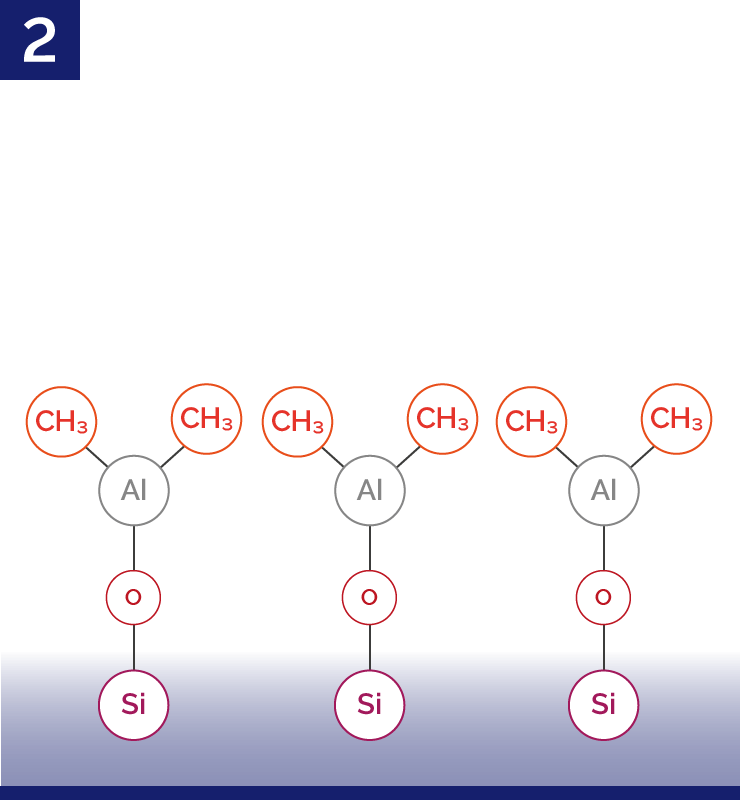
Purge
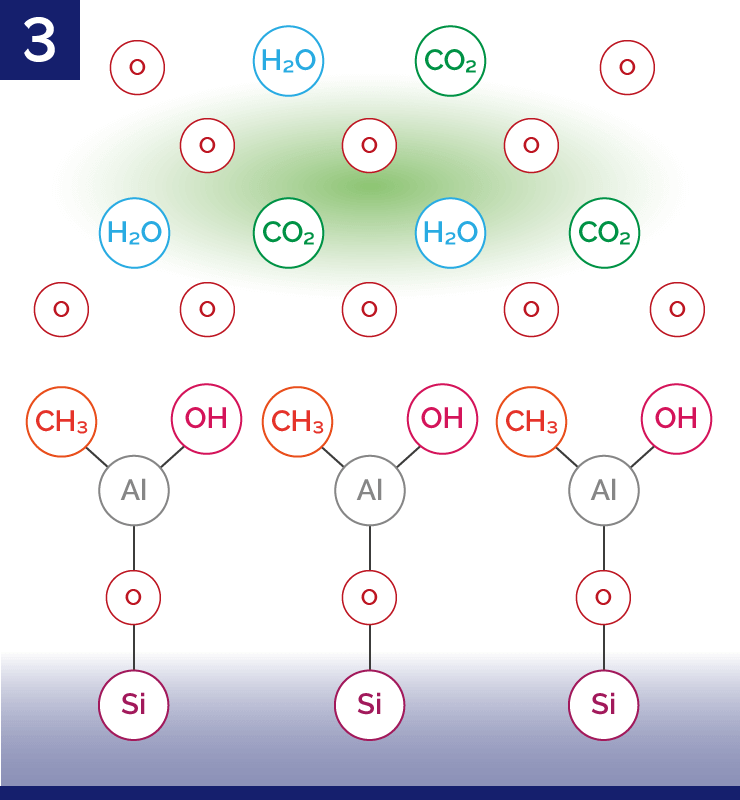
2nd Half-Cycle
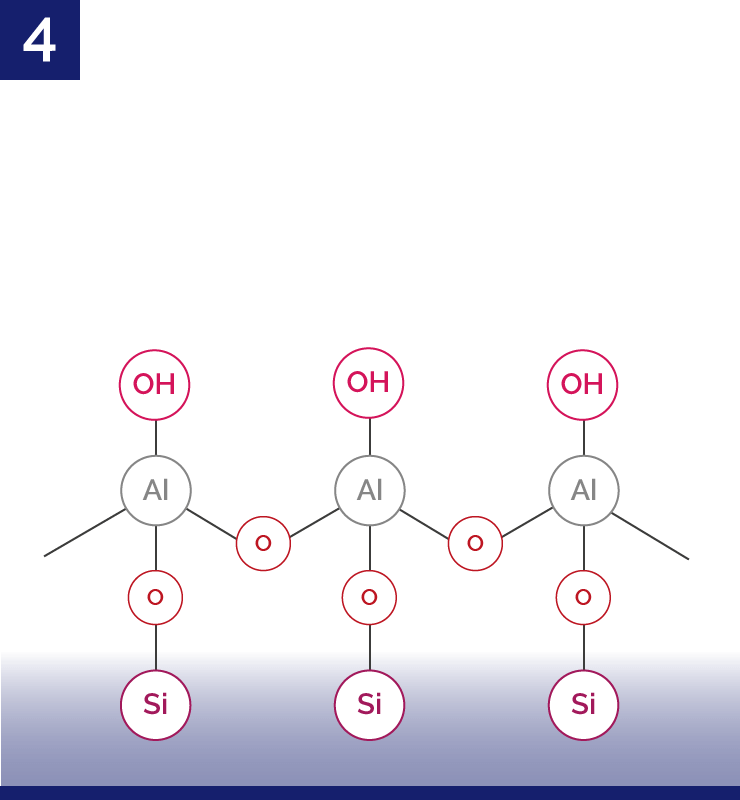
Purge
In addition to the benefits of thermal ALD, PEALD allows for a wider choice of precursor chemistry with enhanced film quality:
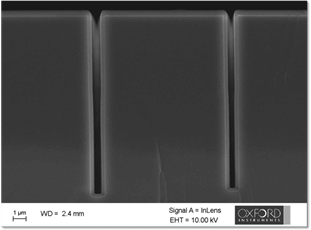
Conformal coating of high aspect ratio (15:1) structure with high-rate plasma ALD SiO2
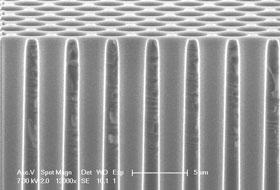
Al2O3 deposited by FlexAL ALD - Courtesy by Eindhoven University of Technology

Conformal deposition of SiO2, TiO2 and Al2O3 by Plasma ALD, (CC BY 4.0 license), image library at www.AtomicLimits.com, 2021

| PlasmaPro ASP | FlexAL |
Atomfab | |
| Loading | Load lock or Cassette handler | Load lock or Cassette |
Cassette handler. Brooks MMX with aligner. Optional cool-down station. |
| Substrates | Up to 200mm wafers handling and pieces on a carrier plate | Up to 200mm wafers handling and pieces on a carrier plate | Can be configured for 200 mm, 150 mm or 100 mm. |
| Bubbled liquid & solid precursors | Up to 6 precursors, bubbled or vapour drawn | Up to 8 plus water, ozone and gases | Vapour drawn precursors |
| Max precursor source temperature | Up to 200 °C | 200ºC | High vapour pressure precursors cooled below room temperature for controlled, repeatable dosing |
| MFC controlled gas lines with rapid delivery system; 1) thermal gas precursors (e.g. NH<sub>3</sub>, O<sub>2</sub>) 2) plasma gases (e.g. O<sub>2</sub>, N<sub>2</sub>, H<sub>2</sub>) | On board 4 configurable (toxic or non-toxic lines) line gas pod and 1 fixed Ar | Up to 10 in externally mounted gas pod | On board 4 configurable (toxic or non-toxic lines) line gas pod and 1 fixed Ar |
Our Atomic Layer Deposition equipment is built on well over a decade of experience. Key features include of Oxford Instruments systems include:
A wide variety of materials is possible with Atomic Layer Deposition and a wide range of processes can be guaranteed and set up by our process engineers. For novel processes, our extensive process knowledge and vast network allow us to provide starting point recipes that should be good starting blocks to go quickly towards a robust process.
Often plasma-based processes are available utilizing our plasma knowledge and handling of MFC controlled gas mixtures including toxic gases.
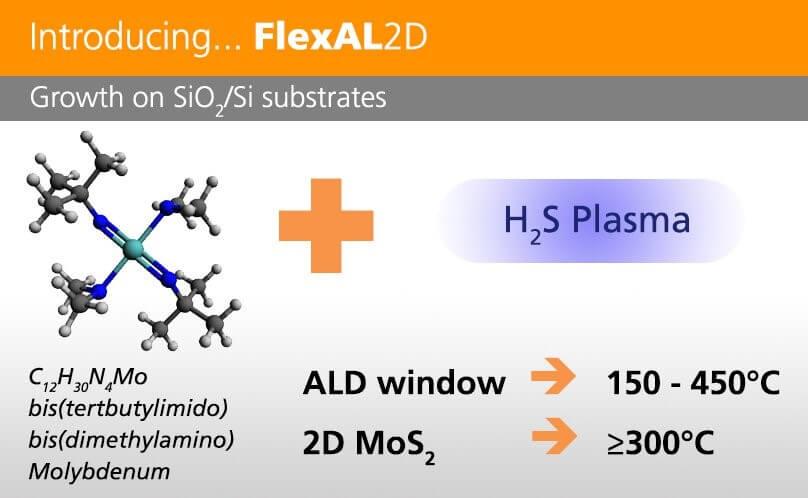
2D materials growth can also be grown by ALD which is a new development with the aim to go toward high-quality MoS2 films. ALD chemistry control has the promise to be able to utilize 2D sulphides with their unique properties at CMOS compatible temperatures with precise digital thickness control over a large area (200mm wafers).
Metals |
Fluorides |
Sulphides |
Pt |
AlF<sub>3 |
MoS<sub>2 |
Ru |
MgF<sub>2 |
Oxides |
Nitrides |
Al<sub>2</sub>O<sub>3 |
AlN |
Co<sub>3</sub>O<sub>4 |
|
Ga<sub>2</sub>O<sub>3 |
GaN |
HfO<sub>2 |
HfN |
In<sub>2</sub>O<sub>3 |
|
Li<sub>2</sub>CO<sub>3 |
|
MoO<sub>3 |
|
Nb<sub>2</sub>O<sub>5 |
NbN |
NiO |
|
SiO<sub>2 |
Si<sub>3</sub>N<sub>4 |
SnO<sub>2 |
|
Ta<sub>2</sub>O<sub>5 |
TaN |
TiO<sub>2 |
TiN |
WO<sub>3 |
WN |
ZnO |
|
ZrO2 |
We are very pleased to present the research projects of two PhD students from Eindhoven University of Technology (TU/e). As a lead university in Engineering Science and Technology, TU/e has been working on innovative process technologies dedicated to advancing the industrial application of Atomic Layer Deposition (ALD), an advanced deposition technique that allows for ultra-thin films to be deposited with atomic-level thickness control.
After 15 years of partnership between Oxford Instruments Plasma Technology and the Eindhoven University of Technology, we continue to push the boundaries of ALD research and development, one of the most rapidly evolving techniques used in many applications of nanofabrication. Both research students, Karsten Arts and Marc Merkx, have used Oxford Instruments’ FlexAL ALD system featuring a remote inductively coupled plasma source, enabling high-quality deposition.
Atomfab is the fastest remote plasma ALD system for HVM on the market, specifically designed for manfacturing GaN HEMT and RF Devices.